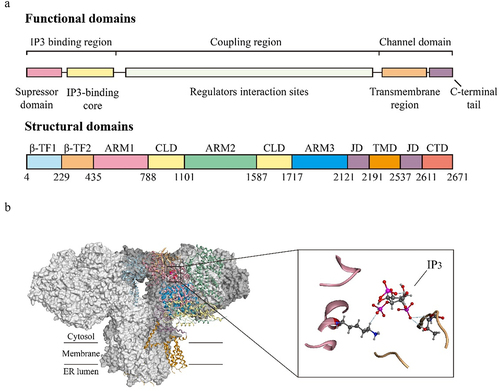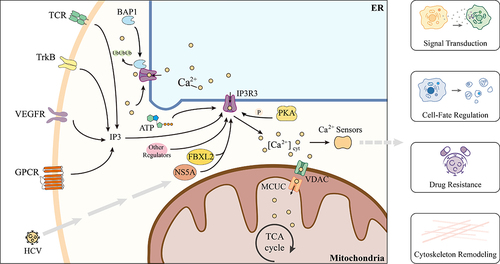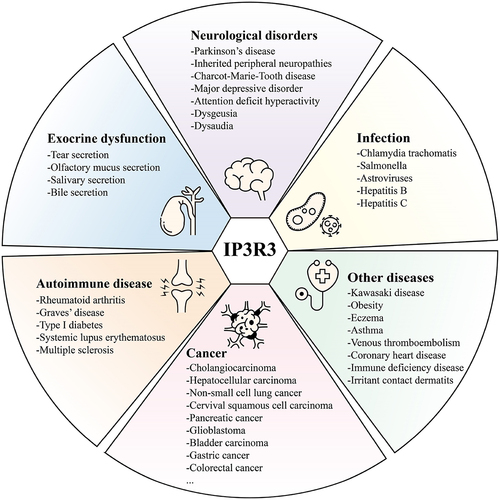Figures & data
Figure 1. (A) functional domains and structural domains of IP3R3. (B) Cryo-EM structure of human IP3R3 in an IP3-bound state (PDB entry ID: 6DRC).

Figure 2. The functional role of IP3R3. IP3R3 binds to IP3 generated in response to extracellular stimuli, leading to changes in intracellular Ca2+ concentration. Ca2+ sensors recognize fluctuations in Ca2+ concentration and transmit signals to downstream proteins, ultimately regulating a wide range of biological processes.

Table 1. Related function of IP3R3.
Figure 3. Overview of IP3R3-related diseases. IP3R3 is implicated in the pathogenesis and progression of a variety of diseases, predominantly encompassing neurological disorders, infection, cancer, autoimmune diseases and exocrine dysfunction.

Table 2. IP3R3 variants associated with disease.
Table 3. IP3R3 in cancer.
Data availability statement
Data sharing is not applicable to this article as no new data were created or analyzed in this study.
